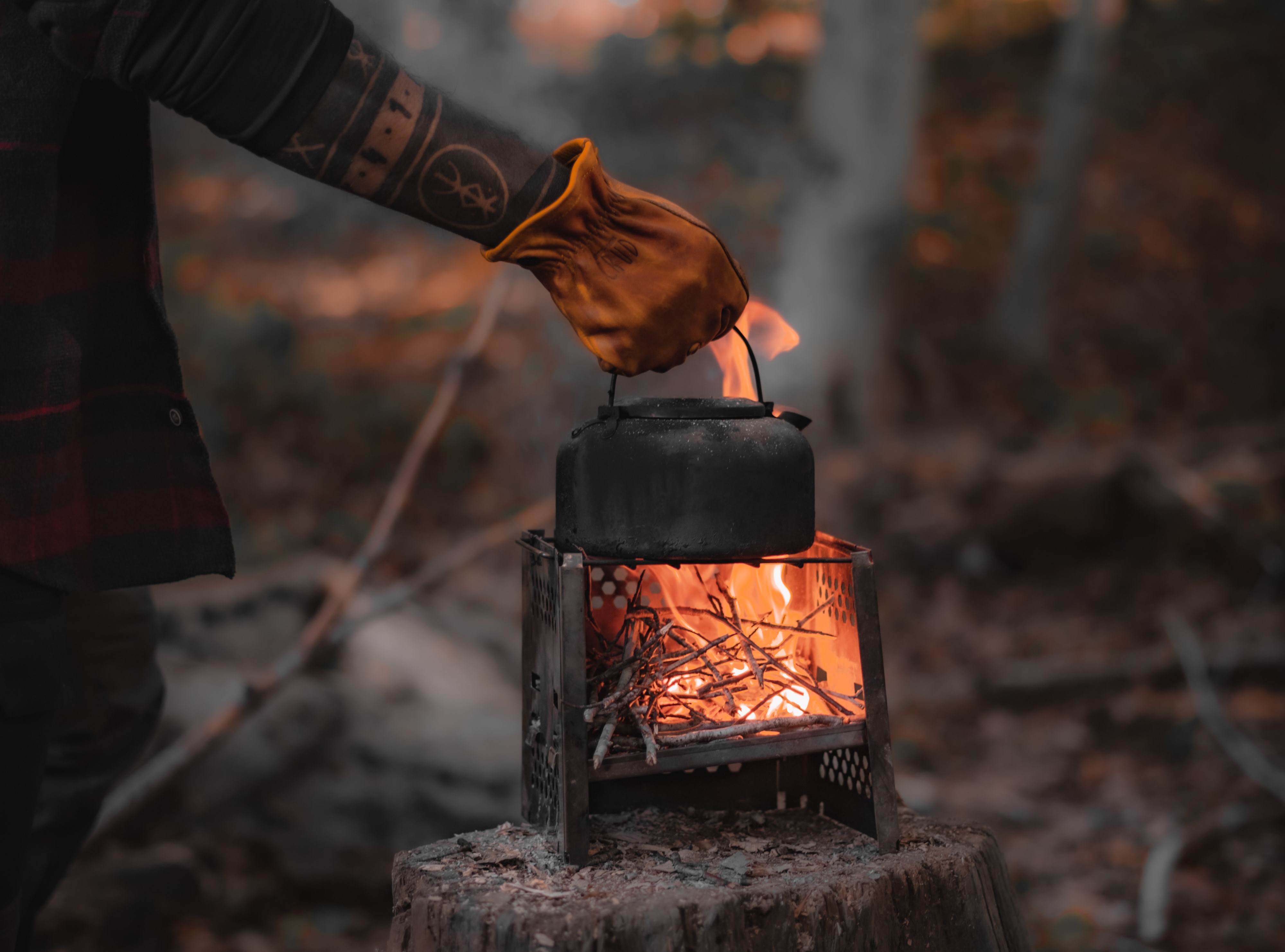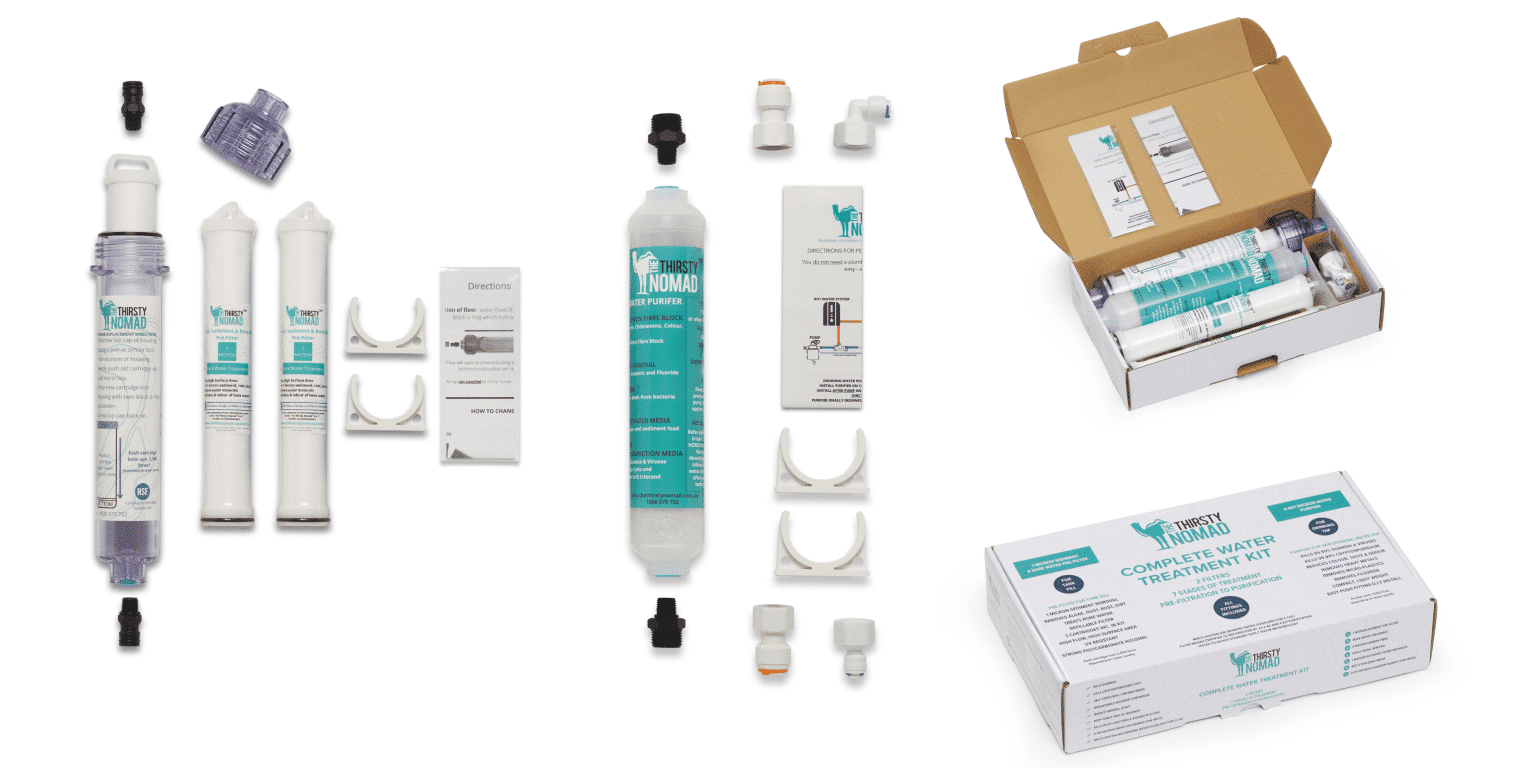Advertisement
Advertisement
Hands up, who has ever pooped the bed? Yeah, me neither. But I know of at least three friends and family members that have. Although I’m not naming any names, one of these I’m positive was due to a massive night on the piss. The other two were on the tail end of a 4WD trip up in Cape York when they drank some water that was contaminated.
A hospital test confirmed it was giardiasis (in case you’re wondering, they test your actual poop), which they were able to pinpoint to a particular water source. Needless to say, it wasn’t pretty.
There are several reasons that you should take extra precautions with your water when you’re on the track, and diarrhoea and vomiting are just one. Untreated drinking water can contain a number of harmful bacteria, viruses and parasites that cause a whole host of not-so-fun illnesses. Trust me, you do not want to be stuck in the bush or using a caravan toilet with a dodgy gut. Even worse is when the whole family is affected and sharing the one camping toilet.
Even if you plan to fill up your water reserves at taps in town, sometimes the change in water from what you’re used to can make you feel slightly off. The locals might be used to the bore water in the Outback, but that’s no guarantee that you’re belly will be happy with the change.
So to avoid the night-time dodgy bowel mayhem, here’s how to ensure your water is safe to drink.

It’s an oldie but it works. Boil the water and let it roll on the boil for at least five minutes to ensure that it’s safe to drink. The problem with this method is that it’s time-consuming, and you can only fit so much into a saucepan. Also, unless you’re going for that swelled, cracked lip pout look, you’re going to have to wait for it to cool down before you can drink it.
Although they can leave your drinking water tasting like a pool, water purification tablets effectively ensure your drinking water is safe.
For purifying smaller batches of water, Aquatabs are a popular choice. They are available at most camping stores and chemists. One tablet treats one litre of water (there are 50 in a packet) and you will need to let it sit for 30 minutes before drinking. This is a good choice for those storing water in jerry cans or water bladders.
However, if the only water you can access is visibly dirty, you must filter it through a fine cloth first and add two tablets.
Clean Oxide Water Treatment Tablets are an easy solution for those wanting to ensure the water in their campervan or caravan water tanks is safe to drink. One tablet treats 100-400 litres of water and there are eight tablets in a packet. These are best added to your water tank when filling and left to stand overnight before drinking.
If the thought of using chemicals to treat your water is off-putting, you’re not alone. Don’t worry, there are plenty of other options out there to make your drinking water safe!

For those who don’t need to filter large amounts of water all in one go, the LifeSaver Wayfarer Water Purifier is a good choice. It works by manually pumping the water from the source (creek or river) through an in-hose, where it is then filtered and delivered to your own container for safe drinking via the out-hose. It has two stages of filtration and will work for up to 5,000 litres before the filter needs replacing.
If pumping the water by hand looks like too much hard work, try the Platypus Gravity Works Water Filter instead.
There are several water filter and purification systems on the market but Thirsty Nomad offers a complete package that does both. To cut a long story short, your water is pre-filtered at the point of filling your water tank and then purified at the point of exit via a purifier that is installed under your sink. It does reduce your flow a little but it’s still good at around 4L per minute.
This system can be used to treat bore water which is sometimes all that is available when heading Outback.

If you plan on spending lengthy periods off-grid, Thirsty Nomad also has a creek draw kit for those wanting to fill up their tanks direct from the source and ensure safe drinking water.
UV water purification works well when it’s done correctly but will only work on water that has already been filtered with no particulate matter. Many people find it hard to adjust to the concept of UV purification as you can’t see anything happening other than a lightbulb turn on. The UV rays from the light are actually what eliminates the nasties in the water making it safe to drink.
Can’t you just leave your bottle out in the sun? Yes, but it’s risky as there are a lot of factors that work against it, including the type of material your bottle is made from, the amount of water and potential clouds.
Popular products for treating just one water bottle at a time with UV purification include the Camelbak All Clear and the Steripen Adventurer Opti. Both work by utilising a UV emitting light to neutralise bacteria and waterborne viruses in the water. The Camelbak can be charged via a USB and can reportedly go for 80 cycles per charge. The Steripen Adventurer Opti is powered by batteries and according to Steripen, can purify up to 8,000 litres.

UV water purification systems can also be fitted to your camper trailer or caravan to make your drinking water safe. This solution is gaining popularity as more and more people shy away from chemical solutions. However, just like when treating smaller amounts by UV, the water needs to be clear so should be filtered down to five microns to start with. This problem can easily be solved with a pre-filter.
Once your water is clear, the LED UV light does its thing to neutralise 99% of the pathogens in the water. Clarence Water Filters have a UV system for caravans that can sterilise over one million litres of water before the unit needs to be replaced. A digital counter lets you know when your LED lights are no longer effective. The unit is practical, working on both 12v and 240v for when switching between batteries, solar and mains power.
Although there are often taps to fill your tanks when travelling Australia, many Outback towns rely on bore water, and many national park campgrounds have signage to indicate you should treat the water to make it safe before drinking. Just because the locals drink it, don’t assume that your guts will take to it as kindly.
Luckily, it’s fairly easy to avoid those night-time bowel disasters caused by contaminated water so take a little extra caution on your next camping trip. The safety of your drinking water is one of those risks that’s not worth taking.